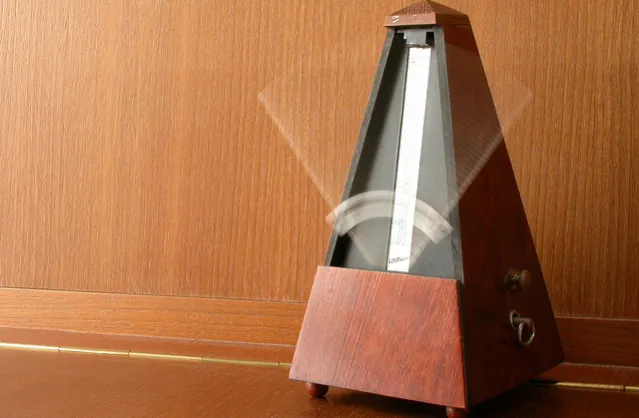Why You Should Use Click Tracks
Jan 04, 2010I’ve touched on click tracks before briefly, but in light of some comments I’ve received after launching the One Song One Month Challenge, I decided I should outline a little more in detail why I think you will be better off learning how to play with and use click tracks in your recordings. Below are three questions to ask yourself to see if having a click in your sessions will help you. Let’s take a quick look…

Via Paco Flickr
Do You Plan On Recording Parts One At A Time?
Unless you have the space and gear to do a full “live” recording of your band all at once, you’re more than likely going to be multi-tracking each part one or two at a time. A typical scenario is to lay down your drums, then bass, guitars, keys, vocals, and so on. The best way to not “get lost” later when you add more parts is to have a quality guide track setup. And probably the most important element of the guide track is the click track.
When “punching in” to redo parts or to just record one section of a song at a time, you really need to hear a few bars of the song leading up to the desired point in order to “get in the groove”. Having a click allows you (or the engineer) to give the musician exactly the number of measures he or she needs as pre-roll and more importantly it helps you to see in Pro Tools when the punch in point is coming on the track. It gets you ready to hit that record button in other words. It’s hard enough to try and “read” wave forms on a computer screen, but having a click as the backbone of your song allows multi-track recording to be a breeze.
Do You Plan On Using Loops, Drum Machines, or Timed Delays?
More and more these days loops and virtual drummers and drum machines are being incorporated into “live” recordings. Sometimes they are even the featured instrument. If you ever hope to bring some of these musical elements into your sessions you’ll need to have recorded everything else to a steady tempo. Obviously a click track is the best way to do that.
In most DAWs, once you set the tempo you can view your session in some kind of grid mode that gives you a visual of bars and beats in the waveform view. If you’ve played to this grid, then bringing in a loop is easy: just drag it in to the bar/beat marker you want and it will play perfectly alongside your “acoustic” audio. Also if you like to use delays on guitars, vocals, etc. then you can have them “timed” to quarter notes or eighth notes and you’ll know that they will line up nicely with your tracks.
Do You Want Editing To Be Faster And Easier?
Sort of a sarcastic question I know, but in all seriousness editing is so much easier in a program like Pro Tools when you’ve recorded your tracks to a click. And I’m not just talking about advanced drum editing or other slicing and dicing. Even basic editing moves become a breeze. Ever need to copy and paste a vocal line or guitar riff? With a set tempo you can just drag the set measures you need (bar 1-4 let’s say) and you’ll know that your recorded part will line up perfectly in it’s new pasted spot (bars 5-8). Once you’ve experience editing without a click compared to with a click, you’ll understand the difference.
It’s Worth The Initial Pain
Most people don’t argue these reasons for using a click, they just simply don’t like having to play with one. My advice for you: stick with it. It’s worth putting up with the initial struggle and fight with the metronome, but once you’ve practiced with it enough you will start to improve your timing and you won’t even notice the click as much.
And really, isn’t improving your recordings worth just a little challenge?
Discover The 6 Steps for Creating a
Radio-Ready Song from Scratch"
Enter Your Email Below To Receive The Free 17-page PDF,
"6 Steps To A Radio-Ready Song"
We hate SPAM. We will never sell your information, for any reason.

